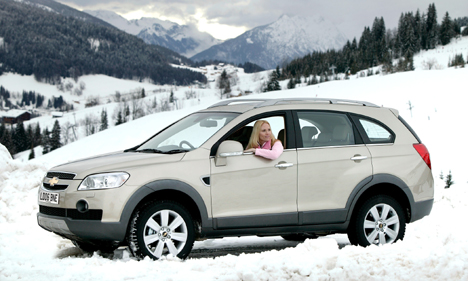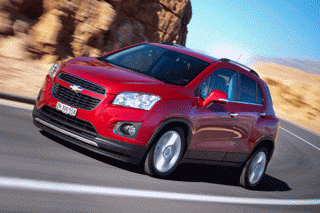Review
It represents a breakthrough model for Chevrolet in terms of quality and design. It is also the brand’s first foray into the SUV market. But it also becomes the most expensive product in Chevrolet dealers’ showrooms, where customers are more used to browsing around re-badged Daewoos offered at around half the Captiva’s asking price.
It’s not existing Chevrolet customers who are the core target of Captiva. While it may attract a few buyers moving up from the Tacuma MPV, Chevrolet wants conquest sales to customers who otherwise might choose an SUV from its value-segment rivals, namely Kia, Hyundai and Suzuki.
As such, Chevrolet is putting its marketing big guns behind Captiva. As AM reported last issue, the launch is being accompanied by a TV campaign, web-based support, cinema advertising and test-drives at five major safari parks.
Prime target is the 35-44 age group, families with young children, and the Captiva range includes five- and seven-seat versions to ensure appeal to larger families. All models share a new 2.0-litre common-rail turbodiesel engine and on-demand four-wheel drive, except for the entry-level Captiva LS, which is available only in 2.4-petrol, front-wheel drive and five-seat format for £16,995.
Standard equipment on the LS includes 16in alloy wheels, air-con, a CD player with MP3 jack and steering-wheel-mounted controls, remote central locking and twin exhaust pipes.
The mid-range Captiva LT models, which are being offered with five or seven seats, gain 17in alloys, ESP, descent control, front fog lamps, upgraded audio, cooled glovebox and leather-covered steering wheel.
The flagship LTX has seven seats as standard, finished in leather trim, plus 18in alloys, heated front seats, cruise control, automatic lights and wipers, climate control, trip computer and a CD-changer.
Chevrolet is asking dealers for 2,000 sales in the remainder of this year, 1,700 of which will be retail. The best-selling Captiva is expected to be the seven-seat 2.0D LT model, priced £21,240, which is predicted to account for one in three sales.
In 2008, the full year target will be 4,000 units. Chevrolet says it expects to not have to discount heavily, if demand in the UK reflects Captiva’s popularity in mainland Europe, where it has been on sale for a year already.

Behind the wheel
Quality and refinement are much improved over the Daewoo-generation cars still waiting to be replaced. Captiva feels well-screwed together and spacious, and its specification is excellent.
While it’ll never compete with a premium SUV, it will easily find its way onto shopping lists alongside Kia’s Sorento and SsangYong’s Rexton II.
All rear seats fold flat to turn the spacious boot into a vast load area. With the seats up, there’s plenty of head, leg and elbow-room for passengers.
At cruising speed, the wind and engine noise is acceptable and the 2.0-litre turbo diesel is gutsy and flexible, with plenty of power low down. The ride is comfortable and it corners well for a high vehicle, although the steering is slightly vague. Still, few buyers will push it to its limits, while fewer still will ever take Captiva off-road.
Price: £16,995 to £24,920
Engines: 2.0-litre turbodiesel: 150bhp; 2.4-litre petrol: 136bhp
Performance: 2.0D: 0-62mph: 11.5sec; top speed 111mph 2.0D auto: 0-62mph: 12.2sec; top speed 112mph 2.4: 0-62mph: 11.5sec; top speed 115mph
Transmission: Five-speed manual; automatic
Efficiency: 2.0D: 37.1mpg; 197g/km
2.4: 31.7mpg; 217g/km
CAP RV 3yr/30k: £8,600 (36%) – £9,950 (42%)
Rivals: Kia Sorento, SsangYong Rexton II, Hyundai Santa Fe, pending Citroën C-Crosser
Strengths: Value, styling, equipment
Weaknesses: Average handling, residual values
Opportunity: Put the Chevrolet brand on more shopping lists
Threat: SUV trend is waning
USP: A well-built Chevy
Factsheet
No information available.














